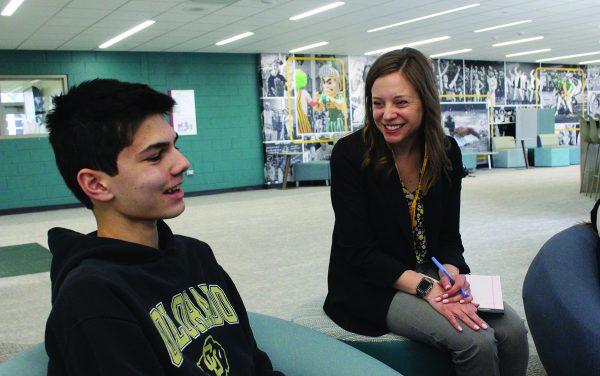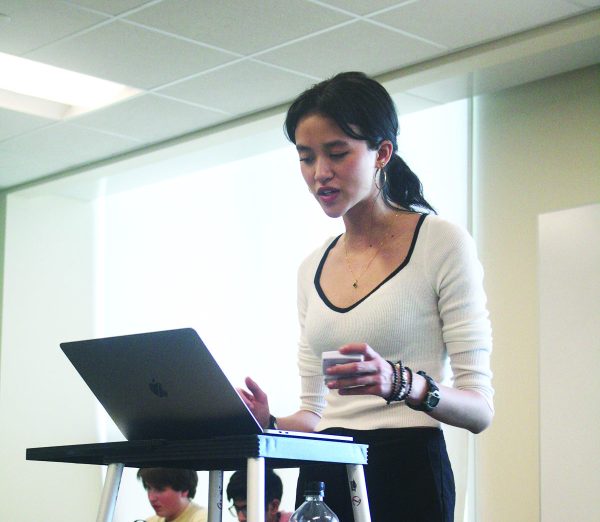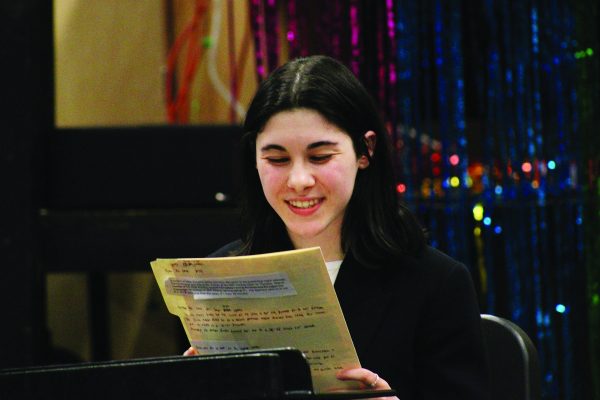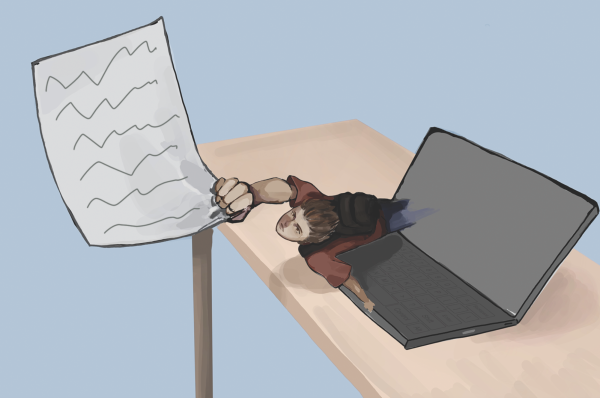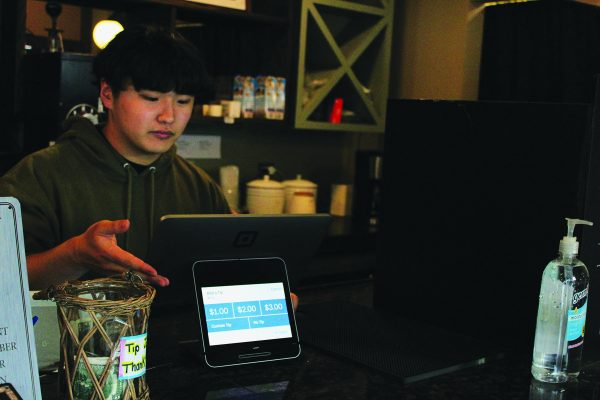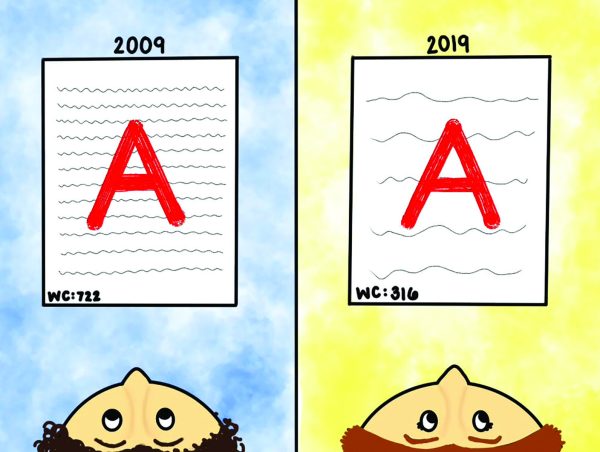New recycling policies lower expenditures
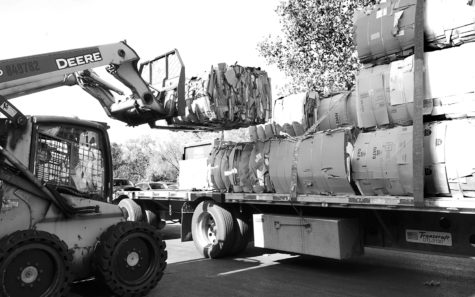
Most cafeteria recyclables never reach their intended destination.
Despite signs promoting recycling around the school, contaminants like half-eaten burgers and used napkins still end up in recycling bins, condemning the entirety of the contents to the trash, including the recyclables.
Dan Whisler, Glenbrook North plant manager, said the problem is especially prevalent in the cafeteria, where it is rare for a recycling bin’s contents to be uncontaminated.
“We don’t attempt to separate [recyclables] if they’re contaminated [with food],” Whisler said.
In spite of this issue, recycling has become cheaper since the introduction of a policy which separates cardboard from other mixed recyclables, or commingled recyclables, which the cardboard was previously thrown in with. The cardboard is then condensed into bundles using a cardboard compactor and the school receives a small amount of money for each bundle, which pays for the lease of the compactor.
“All that cardboard goes straight to a pulp mill or paper mill, so you’re really comfortable that [it] is actually being recycled properly,” said Whisler. “At the transfer stations, I don’t know. [I have] seen different reports on how well they really handle the [commingled recyclables] that are brought through to them.”
Whisler said waste management companies tend to charge for recycling by the ton or by bins with set volumes. Since cardboard is now recycled separately in bundles and no longer takes up space in the commingled bins, the school can pay for lower volume bins, making the process cheaper.
“We’ve saved[$8,000 to $10,000] a year for the last couple of years [with these practices],” Whisler said.
Senior Michael Tzeng, an Environmental Awareness Club co-president, said the club has visited teachers in order to share ideas on how to improve recycling efforts.
Senior Garrett Chan, another Environmental Awareness Club co-president, said he thinks the school needs more recycling bins in high traffic areas to make it easier for students to recycle around the school.
“Just looking at the [cafeteria], and looking at the blocks, there’s not enough recycling bins,” said Chan. “So that’s something that we’re trying to push for. Just having more, since people don’t see recycling bins and they don’t want to have to look [for them].”
Science teacher Marcel Grdinic said he attended Northwestern University’s second annual community picnic during the summer and witnessed a very robust system of recycling. Volunteers stood by three-section bins, informing the public of what could be thrown into each. One section of a bin was marked recycling, another for garbage and the third for compost.
Whisler said he hopes to fit some three-section sorting stations into [the GBN] budget after seeing them at College of DuPage. However, the cost of around $600 to $700 per sorting station dampens his desire to place them in high traffic areas of the school where they could help avoid the contamination of recycling bins.
“Frankly, I’d love to have some here,” said Whisler. “They’re expensive, but [convenient].”
After hearing about the three-section sorting stations, Tzeng said that he would like them to come to GBN.
“I feel like that would be a really good thing to put in the [cafeteria] since … there’s so many things that could be recycled there,” Tzeng said.
Whisler said that with or without the three-section recycling bins, increased awareness of recycling would be beneficial.
“Awareness is good,” said Whisler. “I’ve shared [information] with some of the clubs before and they’ve [printed copies] and posted signage by the cans that say, ‘This is what belongs in here and this is what doesn’t,’ … and I think it helps.”
Grdinic said he made recycling a key discussion point during the first few weeks of school in order to improve student awareness of where they were throwing things out.
“I think it’s one of those issues where it just comes down to informing, that most people don’t know how it’s supposed to work, or there’s still the rumors going around of students saying that GBN doesn’t recycle, it doesn’t matter, it all goes to the same place,” said Grdinic. “There’s some truth to that. If we mix [contaminants and recyclables], then it does all go to the same place because we don’t have the resources to sort it.”


